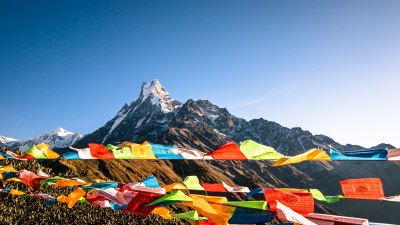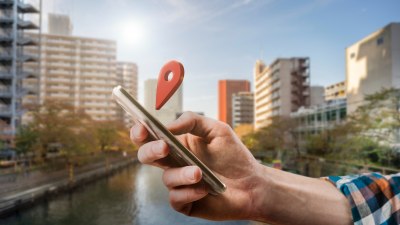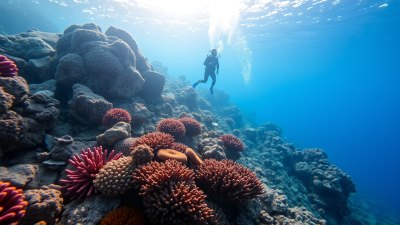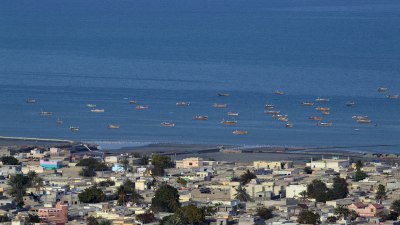Staying Charged While Backpacking Through Nepal
Essential tips for keeping your devices charged during your Nepal backpacking adventure.

Image by gorkhe1980 on Freepik
Backpacking has gained immense popularity as a way to explore diverse landscapes and cultures, and Nepal, with its majestic mountains and rich traditions, draws adventurers from around the world. However, staying connected during your travels, whether for navigation, capturing memories, or emergencies, requires planning. Here are some crucial tips for ensuring your devices stay charged while backpacking through the stunning terrain of Nepal.
Understand the Power Sources
When backpacking in Nepal, it’s important to understand the various power sources available. In many remote areas, electricity may not be readily available, especially in the higher altitudes. You'll want to become familiar with what options are accessible. In larger towns like Pokhara and Kathmandu, you will find numerous shops and cafes with charging stations. However, in smaller villages, the electricity supply may be limited to certain hours.
Portable Power Banks
One of the most essential items for any backpacker is to carry a portable power bank. These handy devices can store power for multiple charges for your phones, cameras, or any USB-powered device. Look for a power bank with a high capacity (10,000mAh or more) that offers multiple USB outputs, allowing you to charge several devices simultaneously. Ensure it's lightweight, as you will be carrying it throughout your journey.
Solar Chargers
Solar chargers are an excellent alternative for the eco-conscious backpacker. They are an ideal solution for charging your devices while hiking during the day. Look for a compact and foldable solar charger that can easily fit in your backpack. Keep in mind that solar charging may be slow, depending on weather conditions, so it’s advisable to pair these with power banks to store energy for times when sunlight may not be abundant.
Utilizing Local Charging Stations
Local charging stations are available in many towns and villages across Nepal. Often found in tea houses, lodges, or cafes, these stations may offer various charging options. However, it's good practice to inquire about the costs associated with charging your devices as some places may charge a small fee. It’s recommended to have your own charging cables on hand, as these establishments may not provide them.
Smartphone Apps for Offline Navigation
While staying charged is critical, utilizing smartphone apps designed for offline navigation can save battery life and reduce your need for constant charging. Download topographic maps from apps like Maps.me or Gaia GPS before your trek. Make sure to enable offline map access to avoid using cell service which can drain your battery quickly. This preparation will allow you to navigate without needing to have your GPS on at all times.
Power-Saving Modes and Settings
Knowing how to manage the battery life of your devices effectively can extend their usability significantly. Most smartphones and devices come equipped with power-saving modes. Use this feature when you know you won't have access to charging for a while. Turn off background apps, limit notifications, and lower screen brightness to conserve battery life. Additionally, disable unnecessary features such as Bluetooth and Wi-Fi when they aren’t needed.
Effective Camera Use
The breathtaking vistas of Nepal are a photographer's dream, but capturing every moment can take a toll on your battery life. To maximize your camera’s usage, consider reducing the resolution and quality of images if high-quality photos aren’t strictly necessary for every shot. Additionally, maintaining a fully charged spare battery for your camera can save you from missing out on those incredible moments waiting to be captured.
Keep Devices at Optimal Charging Levels
Battery maintenance is crucial for long treks. Avoid letting your devices drain completely before charging them; instead, try to keep them between 20-80% charged whenever possible. Lithium batteries, commonly used in smartphones and cameras, perform best when not frequently drained to zero. Find opportunities to charge during breaks, even for short periods, to maintain that optimal level.
Invest in a Multi-Device Charging System
If your daypack has enough space, consider a compact solar charging system designed specifically for multiple devices. These systems can be small and light, making them easy to carry while offering the convenience to charge more than one gadget simultaneously. This innovation can ensure that you have consistent power sources accessible regardless of what devices you bring along.
Community Approach to Charging
When trekking with a group, consider combining your resources for charging. Group members can share portable chargers or power banks, allowing for a more strategic approach to keeping everyone’s devices charged. Besides fostering camaraderie, it ensures that you do not heavily rely on your personal power supply alone.
Adapt Your Schedule
Be mindful of your charging schedule. If you’re on a trek where you know that charging will be limited, plan your device usage strategically. Allocate certain times of the day solely to charging devices, perhaps when you settle down for the evening at a tea house or lodge. This methodical approach can help balance usage while preserving battery life.
Investment in Quality Gear
Given the rugged terrain and environments in which you will be backpacking, investing in high-quality gear that can withstand wear and tear is essential. Ensure all your charging equipment, solar chargers, and power banks are durable and suited for outdoor conditions. Look for weatherproof devices to safeguard against rain or accidental impact as you navigate the trails.
Research the Trekking Route
Before embarking on your journey through Nepal, research your chosen trekking route thoroughly. Understand the locations of tea houses, lodges, and access to charging facilities. Popular treks like the Annapurna Circuit and Everest Base Camp offer varied amenities along the way. Knowing when and where you can charge your devices can help you plan your battery conservation and usage effectively.
Backpacking in Nepal is a fulfilling adventure filled with breathtaking experiences, but staying charged while exploring this incredible region is paramount. By following these tips—understanding power sources, utilizing power banks and solar chargers, leveraging local charging options, and being strategic about your devices' usage—you will find that you can keep your devices charged and operational throughout your journey. Remember, while there is joy in capturing every moment, ensure you also enjoy the adventure of trekking through one of the world’s most beautiful landscapes.











